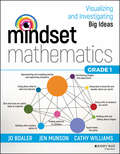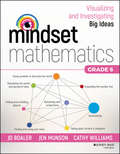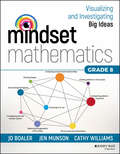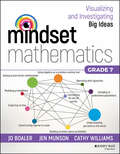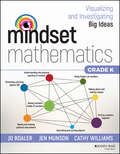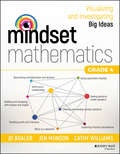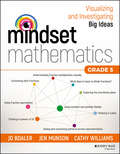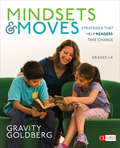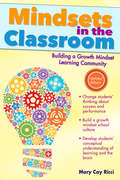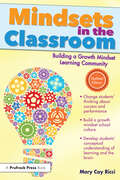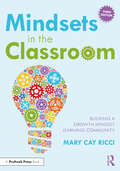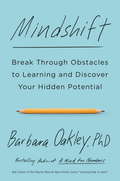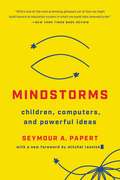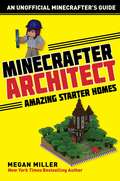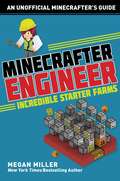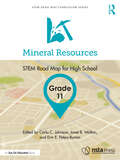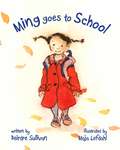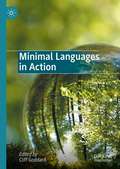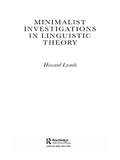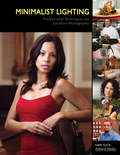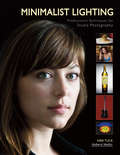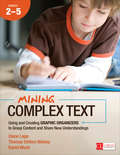- Table View
- List View
Mindset Mathematics: Visualizing And Investigating Big Ideas, Grade 4 (Mindset Mathematics)
by Cathy Williams Jo Boaler Jen MunsonEngage students in mathematics using growth mindset techniques The most challenging parts of teaching mathematics are engaging students and helping them understand the connections between mathematics concepts. In this volume, you'll find a collection of low floor, high ceiling tasks that will help you do just that, by looking at the big ideas at the first-grade level through visualization, play, and investigation. During their work with tens of thousands of teachers, authors Jo Boaler, Jen Munson, and Cathy Williams heard the same message—that they want to incorporate more brain science into their math instruction, but they need guidance in the techniques that work best to get across the concepts they needed to teach. So the authors designed Mindset Mathematics around the principle of active student engagement, with tasks that reflect the latest brain science on learning. Open, creative, and visual math tasks have been shown to improve student test scores, and more importantly change their relationship with mathematics and start believing in their own potential. The tasks in Mindset Mathematics reflect the lessons from brain science that: There is no such thing as a math person - anyone can learn mathematics to high levels. Mistakes, struggle and challenge are the most important times for brain growth. Speed is unimportant in mathematics. Mathematics is a visual and beautiful subject, and our brains want to think visually about mathematics. With engaging questions, open-ended tasks, and four-color visuals that will help kids get excited about mathematics, Mindset Mathematics is organized around nine big ideas which emphasize the connections within the Common Core State Standards (CCSS) and can be used with any current curriculum.
Mindset Mathematics: Visualizing And Investigating Big Ideas, Grade 5 (Mindset Mathematics Ser.)
by Cathy Williams Jo Boaler Jen MunsonEngage students in mathematics using growth mindset techniques The most challenging parts of teaching mathematics are engaging students and helping them understand the connections between mathematics concepts. In this volume, you'll find a collection of low floor, high ceiling tasks that will help you do just that, by looking at the big ideas at the sixth-grade level through visualization, play, and investigation. During their work with tens of thousands of teachers, authors Jo Boaler, Jen Munson, and Cathy Williams heard the same message—that they want to incorporate more brain science into their math instruction, but they need guidance in the techniques that work best to get across the concepts they needed to teach. So the authors designed Mindset Mathematics around the principle of active student engagement, with tasks that reflect the latest brain science on learning. Open, creative, and visual math tasks have been shown to improve student test scores, and more importantly change their relationship with mathematics and start believing in their own potential. The tasks in Mindset Mathematics reflect the lessons from brain science that: There is no such thing as a math person - anyone can learn mathematics to high levels. Mistakes, struggle and challenge are the most important times for brain growth. Speed is unimportant in mathematics. Mathematics is a visual and beautiful subject, and our brains want to think visually about mathematics. With engaging questions, open-ended tasks, and four-color visuals that will help kids get excited about mathematics, Mindset Mathematics is organized around nine big ideas which emphasize the connections within the Common Core State Standards (CCSS) and can be used with any current curriculum.
Mindset Mathematics: Visualizing And Investigating Big Ideas, Grade 5 (Mindset Mathematics)
by Cathy Williams Jo Boaler Jen MunsonEngage students in mathematics using growth mindset techniques The most challenging parts of teaching mathematics are engaging students and helping them understand the connections between mathematics concepts. In this volume, you'll find a collection of low floor, high ceiling tasks that will help you do just that, by looking at the big ideas at the eighth-grade level through visualization, play, and investigation. During their work with tens of thousands of teachers, authors Jo Boaler, Jen Munson, and Cathy Williams heard the same message—that they want to incorporate more brain science into their math instruction, but they need guidance in the techniques that work best to get across the concepts they needed to teach. So the authors designed Mindset Mathematics around the principle of active student engagement, with tasks that reflect the latest brain science on learning. Open, creative, and visual math tasks have been shown to improve student test scores, and more importantly change their relationship with mathematics and start believing in their own potential. The tasks in Mindset Mathematics reflect the lessons from brain science that: There is no such thing as a math person - anyone can learn mathematics to high levels. Mistakes, struggle and challenge are the most important times for brain growth. Speed is unimportant in mathematics. Mathematics is a visual and beautiful subject, and our brains want to think visually about mathematics. With engaging questions, open-ended tasks, and four-color visuals that will help kids get excited about mathematics, Mindset Mathematics is organized around nine big ideas which emphasize the connections within the Common Core State Standards (CCSS) and can be used with any current curriculum.
Mindset Mathematics: Visualizing And Investigating Big Ideas, Grade 5 (Mindset Mathematics)
by Cathy Williams Jo Boaler Jen MunsonEngage students in mathematics using growth mindset techniques The most challenging parts of teaching mathematics are engaging students and helping them understand the connections between mathematics concepts. In this volume, you'll find a collection of low floor, high ceiling tasks that will help you do just that, by looking at the big ideas at the seventh-grade level through visualization, play, and investigation. During their work with tens of thousands of teachers, authors Jo Boaler, Jen Munson, and Cathy Williams heard the same message—that they want to incorporate more brain science into their math instruction, but they need guidance in the techniques that work best to get across the concepts they needed to teach. So the authors designed Mindset Mathematics around the principle of active student engagement, with tasks that reflect the latest brain science on learning. Open, creative, and visual math tasks have been shown to improve student test scores, and more importantly change their relationship with mathematics and start believing in their own potential. The tasks in Mindset Mathematics reflect the lessons from brain science that: There is no such thing as a math person - anyone can learn mathematics to high levels. Mistakes, struggle and challenge are the most important times for brain growth. Speed is unimportant in mathematics. Mathematics is a visual and beautiful subject, and our brains want to think visually about mathematics. With engaging questions, open-ended tasks, and four-color visuals that will help kids get excited about mathematics, Mindset Mathematics is organized around nine big ideas which emphasize the connections within the Common Core State Standards (CCSS) and can be used with any current curriculum.
Mindset Mathematics: Visualizing And Investigating Big Ideas, Grade 5 (Mindset Mathematics)
by Cathy Williams Jo Boaler Jen MunsonEngage students in mathematics using growth mindset techniques The most challenging parts of teaching mathematics are engaging students and helping them understand the connections between mathematics concepts. In this volume, you'll find a collection of low floor, high ceiling tasks that will help you do just that, by looking at the big ideas at the kindergarten-grade level through visualization, play, and investigation. During their work with tens of thousands of teachers, authors Jo Boaler, Jen Munson, and Cathy Williams heard the same message—that they want to incorporate more brain science into their math instruction, but they need guidance in the techniques that work best to get across the concepts they needed to teach. So the authors designed Mindset Mathematics around the principle of active student engagement, with tasks that reflect the latest brain science on learning. Open, creative, and visual math tasks have been shown to improve student test scores, and more importantly change their relationship with mathematics and start believing in their own potential. The tasks in Mindset Mathematics reflect the lessons from brain science that: There is no such thing as a math person - anyone can learn mathematics to high levels. Mistakes, struggle and challenge are the most important times for brain growth. Speed is unimportant in mathematics. Mathematics is a visual and beautiful subject, and our brains want to think visually about mathematics. With engaging questions, open-ended tasks, and four-color visuals that will help kids get excited about mathematics, Mindset Mathematics is organized around nine big ideas which emphasize the connections within the Common Core State Standards (CCSS) and can be used with any current curriculum.
Mindset Mathematics: Visualizing and Investigating Big Ideas, Grade 4 (Mindset Mathematics Ser.)
by Cathy Williams Jo Boaler Jen MunsonEngage students in mathematics using growth mindset techniques The most challenging parts of teaching mathematics are engaging students and helping them understand the connections between mathematics concepts. In this volume, you'll find a collection of low floor, high ceiling tasks that will help you do just that, by looking at the big ideas at the first-grade level through visualization, play, and investigation. During their work with tens of thousands of teachers, authors Jo Boaler, Jen Munson, and Cathy Williams heard the same message—that they want to incorporate more brain science into their math instruction, but they need guidance in the techniques that work best to get across the concepts they needed to teach. So the authors designed Mindset Mathematics around the principle of active student engagement, with tasks that reflect the latest brain science on learning. Open, creative, and visual math tasks have been shown to improve student test scores, and more importantly change their relationship with mathematics and start believing in their own potential. The tasks in Mindset Mathematics reflect the lessons from brain science that: There is no such thing as a math person - anyone can learn mathematics to high levels. Mistakes, struggle and challenge are the most important times for brain growth. Speed is unimportant in mathematics. Mathematics is a visual and beautiful subject, and our brains want to think visually about mathematics. With engaging questions, open-ended tasks, and four-color visuals that will help kids get excited about mathematics, Mindset Mathematics is organized around nine big ideas which emphasize the connections within the Common Core State Standards (CCSS) and can be used with any current curriculum.
Mindset Mathematics: Visualizing and Investigating Big Ideas, Grade 5 (Mindset Mathematics Ser.)
by Cathy Williams Jo Boaler Jen MunsonEngage students in mathematics using growth mindset techniques The most challenging parts of teaching mathematics are engaging students and helping them understand the connections between mathematics concepts. In this volume, you'll find a collection of low floor, high ceiling tasks that will help you do just that, by looking at the big ideas at the fifth-grade level through visualization, play, and investigation. During their work with tens of thousands of teachers, authors Jo Boaler, Jen Munson, and Cathy Williams heard the same message—that they want to incorporate more brain science into their math instruction, but they need guidance in the techniques that work best to get across the concepts they needed to teach. So the authors designed Mindset Mathematics around the principle of active student engagement, with tasks that reflect the latest brain science on learning. Open, creative, and visual mathematics tasks have been shown to improve student test scores, and more importantly change their relationship with mathematics and start believing in their own potential. The tasks in Mindset Mathematics reflect the lessons from brain science that: There is no such thing as a math person - anyone can learn mathematics to high levels. Mistakes, struggle and challenge are the most important times for brain growth. Speed is unimportant in mathematics. Mathematics is a visual and beautiful subject, and our brains want to think visually about mathematics. With engaging questions, open-ended tasks, and four-color visuals that will help kids get excited about mathematics, Mindset Mathematics is organized around nine big ideas which emphasize the connections within the Common Core State Standards (CCSS) and can be used with any current curriculum.
Mindsets and Moves: Strategies That Help Readers Take Charge [Grades K-8] (Corwin Literacy)
by Gravity GoldbergStep back so readers can step forward When it comes to teaching reading, Gravity Goldberg declares there is a structure, one that works with your current curriculum, to help readers take charge. The way forward Gravity says lies in admiring, studying, and really getting to know your students. Easily replicable in any setting, any time, her 4 Ms framework ultimately lightens your load because it allows students to monitor and direct their reading lives. Miner: Uncovering Students’ Reading Processes (Focus: Assessment) Mirror: Giving Feedback That Reinforces a Growth Mindset (Focus: Feedback) Model: Showing Readers What We Do (Focus: Demonstration) Mentor: Guiding Students to Try New Ways of Reading (Focus: Guided Practice and Coaching)
Mindsets and Moves: Strategies That Help Readers Take Charge [Grades K-8] (Corwin Literacy)
by Gravity GoldbergStep back so readers can step forward When it comes to teaching reading, Gravity Goldberg declares there is a structure, one that works with your current curriculum, to help readers take charge. The way forward Gravity says lies in admiring, studying, and really getting to know your students. Easily replicable in any setting, any time, her 4 Ms framework ultimately lightens your load because it allows students to monitor and direct their reading lives. Miner: Uncovering Students’ Reading Processes (Focus: Assessment) Mirror: Giving Feedback That Reinforces a Growth Mindset (Focus: Feedback) Model: Showing Readers What We Do (Focus: Demonstration) Mentor: Guiding Students to Try New Ways of Reading (Focus: Guided Practice and Coaching)
Mindsets in the Classroom
by Mary Cay RicciWhen students believe they can that dedication and hard work can change their performance in school, they grow to become resilient, successful students. Inspired by the popular mindset idea that hard work and effort can lead to success, Mindsets in the Classroom provides educators with ideas for ways to build a growth mindset school culture, wherein students are challenged to change their thinking about their abilities and potential. The book includes a planning template, step-by-step description of a growth mindset culture, and "look-fors" for adopting a differentiated, responsive instruction model teachers can use immediately in their classrooms. It also highlights the importance of critical thinking and teaching students to learn from failure. The book includes a sample professional development plan and ideas for communicating the mindset concept to parents. With this book's easy-to-follow advice, tasks, and strategies, teachers can grow a love of learning in their students.
Mindsets in the Classroom: Building a Growth Mindset Learning Community
by Mary Cay RicciWhen students believe that dedication and hard work can change their performance in school, they grow to become resilient, successful students. Inspired by the popular mindset idea that hard work and effort can lead to success, this updated edition of Mindsets in the Classroom provides educators with ideas for ways to build a growth mindset school culture, wherein students are challenged to change their thinking about their abilities and potential. The book includes a planning template, a step-by-step description of a growth mindset culture, and Look Fors for adopting a differentiated, responsive instruction model teachers can use immediately in their classrooms. It also highlights the importance of critical thinking and teaching students to learn from failure. The four most important components of a growth mindset learning environment are also presented. The book includes a sample professional development plan and ideas for communicating the mindset concept to parents. This updated edition also presents ways to build the concept of “grit” and includes application to Makerspaces, instructional coaching, grading, and more! With this book's easy-to-follow advice, tasks, and strategies, teachers can grow a love of learning in their students.
Mindsets in the Classroom: Building a Growth Mindset Learning Community
by Mary Cay RicciThe latest edition of Mindsets in the Classroom provides educators with ideas and strategies to build a growth mindset school culture, wherein students are challenged to change their thinking about their abilities and potential through resilience, perseverance, and a variety of strategies.This updated edition contains content from the first and second edition, eliminates content that is no longer relevant, and adds a layer of learning that has occurred since the original publication: lessons learned through more recent brain research, implementation of the concept by educators across the world, as well as the author’s own observations and reflections after working in schools, coaching educators, and talking with teachers, administrators, parents, and students about their own mindsets.With this book’s easy-to-follow advice, tasks, and strategies, teachers can grow a love of learning while facilitating the development of resilient, successful students.
Mindshift: Break Through Obstacles to Learning and Discover Your Hidden Potential
by Barbara OakleyMindshift reveals how we can overcome stereotypes and preconceived ideas about what is possible for us to learn and become. At a time when we are constantly being asked to retrain and reinvent ourselves to adapt to new technologies and changing industries, this book shows us how we can uncover and develop talents we didn’t realize we had—no matter what our age or background. We’re often told to “follow our passions.” But in Mindshift, Dr. Barbara Oakley shows us how we can broaden our passions. Drawing on the latest neuroscientific insights, Dr. Oakley shepherds us past simplistic ideas of “aptitude” and “ability,” which provide only a snapshot of who we are now—with little consideration about how we can change. Even seemingly “bad” traits, such as a poor memory, come with hidden advantages—like increased creativity. Profiling people from around the world who have overcome learning limitations of all kinds, Dr. Oakley shows us how we can turn perceived weaknesses, such as impostor syndrome and advancing age, into strengths. People may feel like they’re at a disadvantage if they pursue a new field later in life; yet those who change careers can be fertile cross-pollinators: They bring valuable insights from one discipline to another. Dr. Oakley teaches us strategies for learning that are backed by neuroscience so that we can realize the joy and benefits of a learning lifestyle. Mindshift takes us deep inside the world of how people change and grow. Our biggest stumbling blocks can be our own preconceptions, but with the right mental insights, we can tap into hidden potential and create new opportunities.From the Trade Paperback edition.
Mindstorms: Children, Computers, And Powerful Ideas
by Seymour A. PapertIn this revolutionary book, a renowned computer scientist explains the importance of teaching children the basics of computing and how it can prepare them to succeed in the ever-evolving tech world.Computers have completely changed the way we teach children. We have Mindstorms to thank for that. In this book, pioneering computer scientist Seymour Papert uses the invention of LOGO, the first child-friendly programming language, to make the case for the value of teaching children with computers. Papert argues that children are more than capable of mastering computers, and that teaching computational processes like de-bugging in the classroom can change the way we learn everything else. He also shows that schools saturated with technology can actually improve socialization and interaction among students and between students and teachers.Technology changes every day, but the basic ways that computers can help us learn remain. For thousands of teachers and parents who have sought creative ways to help children learn with computers, Mindstorms is their bible.
Minecrafter Architect: Amazing Starter Homes (Architecture for Minecrafters)
by Megan MillerThe Architecture for Minecrafters series is designed to encourage confidence and creativity by teaching kids to build a wide array of uniquely sophisticated structures. Each book in the series helps players follow blueprints to create impressive masterpieces that are as fantastic as they are functional. Minecrafter Architect: Amazing Starter Homes is the first in this inspiring new series. Guided by hundreds of in-game, step-by-step photos and simple instructions, kids will learn how to build one of ten amazing homes so that they can create interesting and reliable shelter anywhere they spawn. Igloo compounds, prairie houses, and llama ranches are just some of the killer designs that await them when they follow the techniques laid out in this book. With tips for adding d?cor and landscaping touches to their new builds, players can have fun bringing each new home to life. Perfect for beginner to advanced Minecrafters who want to learn more Includes hundreds of step-by-step, full-color photos to guide readers of all ages Helps encourage creativity and problem-solving skills Kids who want to try their hand at virtual design will love the tricks and tips inside this book! Minecrafter Architect: Amazing Starter Homes holds the valuable secrets they need to flex their in-game building skills.
Minecrafter Engineer: Incredible Starter Farms (Engineering for Minecrafters)
by Megan MillerThe Engineering for Minecrafters series is designed to encourage creativity and problem-solving skills in kids who love building in Minecraft. Each book helps players work within the physics of the game to build clever farms, ultra-efficient railways, automated redstone-fueled contraptions, and more. Minecrafter Engineer: Incredible Starter Farms is the first in this compelling and inspiring new series. Guided by hundreds of in-game, step-by-step photos and simple instructions, kids will learn how to engineer one of seven spectacular farms to yield resources and goodies beyond their wildest dreams. Stacks of sugarcanes, gobs of gold, and bushels of blaze rods are the rewards that await them when they follow the techniques laid out in this book. Perfect for beginner to advanced Minecrafters who want to learn more Includes hundreds of step-by-step, full-color photos to guide readers of all ages Helps encourage creativity and problem-solving skills They?re not an expert gamer until they learn the tricks and tips in this book! Minecrafter Engineer: Incredible Starter Farms holds the valuable secrets to becoming the Minecrafter engineer they?ve always wanted to be.
Mineral Resources, Grade 11: STEM Road Map for High School (STEM Road Map Curriculum Series)
by Carla C. Johnson Erin E. Peters-Burton Janet B. WaltonWhat if you could challenge your eleventh graders to come up with a design solution for developing, managing, and utilizing mineral resources? With this volume in the STEM Road Map Curriculum Series, you can! Mineral Resources outlines a journey that will steer your students toward authentic problem solving while grounding them in integrated STEM disciplines. Like the other volumes in the series, this book is designed to meet the growing need to infuse real-world learning into K–12 classrooms. This interdisciplinary, three-lesson module uses project- and problem-based learning to help students develop an in-depth understanding of mineral resources by researching the utility and impact of particular mineral resources on society. Working in teams, students will locate quantitative and qualitative data on mineral resources and discern the reliability of the information, then use their data to write an opinion article and develop a website to convince readers of the effectiveness of a particular design solution for developing, managing, and utilizing mineral resources. To support this goal, students will do the following: Explain how mineral resources are located and used in various ways in society. Explain why mineral resources are important to society. Critically evaluate quantitative and qualitative data about mineral resources. Write an opinion article demonstrating their knowledge about competing design solutions for extracting mineral resources. The STEM Road Map Curriculum Series is anchored in the Next Generation Science Standards, the Common Core State Standards, and the Framework for 21st Century Learning. In-depth and flexible, Mineral Resources can be used as a whole unit or in part to meet the needs of districts, schools, and teachers who are charting a course toward an integrated STEM approach.
Minerva Louise at School
by Janet Morgan StoekeOut for an early morning walk, a chicken wanders into a school that she mistakes for a fancy barn.
Ming Goes to School
by Deirdre Sullivan Maja LöfdahlMing goes to school, where she learns to say hello and good-bye. She meets new friends and introduces them to old friends (including her favorite teddy). She builds sandcastles and makes snow angels; she traces, glitters, and glues. She is so fearless that when held at sword point, she even walks the plank! And when she’s playing in the mud, she reaches out and touches the worms with her bare hands. But despite those brave deeds, she isn’t quite ready for the big red slide-not yet.This is a very sweet story with soft, evocative watercolor illustrations that will help kids to grow comfortable with the idea of starting preschool. Ming is curious and playful and ready for adventure, but even she gets scared of new things sometimes. Kids will relate to her desires and fears and will be excited to see Ming at the top of the slide by the story’s end.A quiet and reassuring picture book for preschoolers (3-5), this is a wonderful going-to-school story that can be read both at home and in the classroom or childcare center. The illustrations provide a lot of diversity of characters, making this feel like any classroom in any school in the country.
Minimal Languages in Action
by Cliff GoddardThis edited book explores the rising interest in minimal languages – radically simplified languages using cross-translatable words and grammar, fulfilling the widely-recognised need to use language which is clear, accessible and easy to translate. The authors draw on case studies from around the world to demonstrate how early adopters have been putting Minimal English, Minimal Finnish, and other minimal languages into action: in language teaching and learning, ‘easy language’ projects, agricultural development training, language revitalisation, intercultural education, paediatric assessment, and health messaging. As well as reporting how minimal languages are being put into service, the contributors explore how minimal languages can be adapted, localised and implemented differently for different purposes. Like its predecessor Minimal English for a Global World: Improved Communication Using Fewer Words (Palgrave Macmillan, 2018), the book will appeal to students and scholars of applied linguistics, language education and translation studies, as well as to professionals in any field where accessibility and translatability matter.
Minimalist Investigations in Linguistic Theory (Routledge Leading Linguists #No.8)
by Howard LasnikProfessor Howard Lasnik is one of the world's leading theoretical linguists. He has produced influential and important work in areas such as syntactic theory, logical form, and learnability. This collection of essays draws together some of his best work from his substantial contribution to linguistic theory.
Minimalist Lighting
by Kirk TuckPacked with incredible images and step-by-step techniques, this book is a must have for commercial, wedding, and portrait photographers working on location who want to maximize their time behind the camera and minimize their time spent hauling cumbersome lighting equipment. The tips show how to select easily portable and versatile equipment for location shoots, cutting down on the packing and porting of expensive equipment. With techniques and information on the latest technology-including battery-powered flashes and accessories-this reference shows photographers how to work with smaller and lighter-weight lighting equipment without sacrificing quality. Whether shooting portraits, landscapes, or interiors, whether indoors or out, photographers will embrace the portable approach offered in this valuable resource.
Minimalist Lighting: Professional Techniques for Studio Photography
by Kirk TuckPhotographers learn how to create amazing photography with this simple, basic, money-saving approach to working in the studio. While exploring available lighting and equipment, this reference tackles the concerns of studio photographers regarding too much gear, not enough space, and a strict budget and offers alternative techniques for photographing subjects. Tips for how to set up a studio in a limited amount of space, what kind of equipment works best for different effects, and finding great tools for budget prices make this a truly comprehensive reference.
Mining Complex Text, Grades 2-5: Using and Creating Graphic Organizers to Grasp Content and Share New Understandings (Corwin Literacy)
by Karen D. Wood Diane K. Lapp Thomas DeVere WolseyYour power tools for making the complex comprehensible Now more than ever, our students are being asked to do highly advanced thinking, talking, and writing around their reading. If only there were ingenious new tools that could give our students the space to tease apart complex ideas in order to comprehend and weld their understandings into a new whole. Good news: these tools exist—Mining Complex Text. You’ll learn how graphic organizers can: Help students read, reread, and take notes on a text Promote students’ oral sharing of information and their ideas Elevate organized note-making from complex text(s) Scaffold students’ narrative and informational writing
Mining Complex Text, Grades 2-5: Using and Creating Graphic Organizers to Grasp Content and Share New Understandings (Corwin Literacy)
by Karen D. Wood Diane K. Lapp Thomas DeVere WolseyYour power tools for making the complex comprehensible Now more than ever, our students are being asked to do highly advanced thinking, talking, and writing around their reading. If only there were ingenious new tools that could give our students the space to tease apart complex ideas in order to comprehend and weld their understandings into a new whole. Good news: these tools exist—Mining Complex Text. You’ll learn how graphic organizers can: Help students read, reread, and take notes on a text Promote students’ oral sharing of information and their ideas Elevate organized note-making from complex text(s) Scaffold students’ narrative and informational writing
